When it comes to knife sharpening, there are a lot of techniques and tools that you can use. One of the most important steps in the sharpening process is stropping your blade. This step helps remove any burrs or imperfections from the edge of your blade, and prepares it for further sharpening. In this article, we will discuss which side of leather to use for stropping your knife. We’ll also provide some tips on how to get the best results from this technique!
The Purpose of Stropping
Most folks understand that a strop is used to keep a razor sharp. But what many don’t know is how or why it works. A strop actually does very little to sharpen the blade itself. It is more of a polishing process that removes the burrs from the metal and straightens the edge.
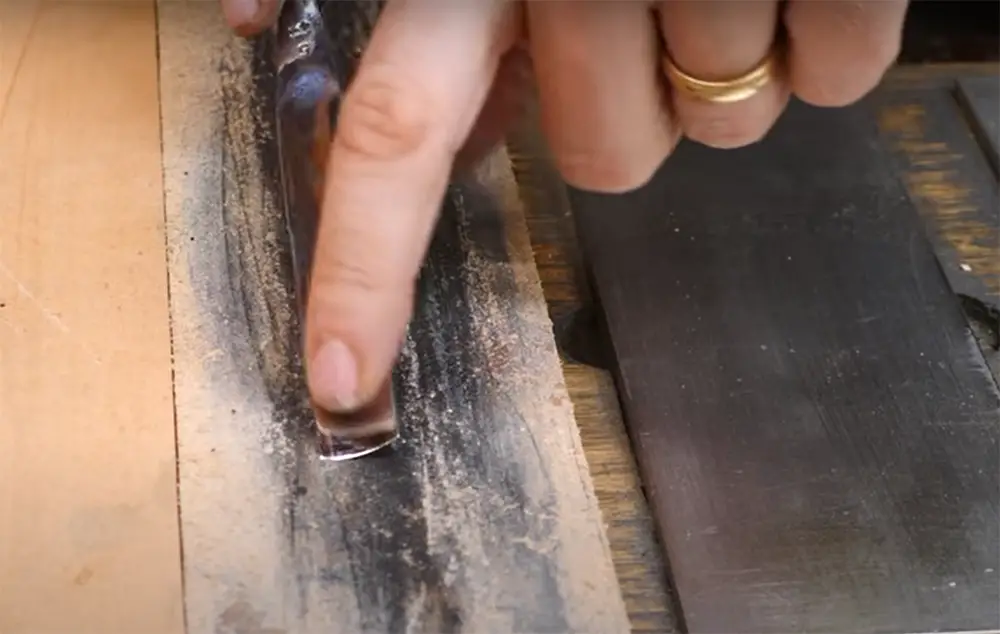
Think of it this way, if you were to take a magnifying glass and look at your razor blade, you would see that it is not one smooth surface. The edge would appear jagged with tiny teeth. Now imagine those same teeth being bent in different directions. That is what happens when you use your blade and it dulls over time. The strop helps to remove those bent teeth and improves the overall sharpness of the blade.
So now that we know what a strop does, let’s talk about which side of leather for strop you should use.
There are two common types of strops based on their surface: those with a flesh or smooth side and those with a suede side. Which one you use will depend on the type of razor you have and your personal stropping style.
If you are using a safety razor or cartridge razor, either side will work just fine. It really comes down to preference. Some people actually prefer to switch between the two sides depending on how their razor is performing.
We will discuss both of the stropping options later, first we will cover the available types of strops based on their design. [1], [2]
Types of Strops
There are two general types of strops: hanging and flat. Hanging strops are often made of leather or canvas and have a loop at one end for attaching to a doorknob, finger or other object. Flat strops can be made of leather, wood, or even cardboard.
Hanging strops
Hanging strops are great for getting a good edge on your blade and are mainly used to sharpen razors. The main advantage of using a hanging strop is that it allows you to use both hands to hold the knife and strop in place. This gives you more control and results in a better edge.
Another advantage of hanging strops is that they’re easy to store and don’t take up much space. You can also use them to strop other objects like straight razors, chisels, and carving tools.
To use a hanging strop, simply attach the loop at one end to a doorknob or other object and hold the knife in your dominant hand. Place the blade against the strop and stroke away from you with light to moderate pressure. Be sure to strop both sides of the blade evenly.
Flat strops
Flat strops are the most versatile and can be used on any type of knife. They are also the easiest to use because you don’t have to worry about orienting the strop correctly. Simply lay the strop flat on a table and stroke the blade along it in one direction.
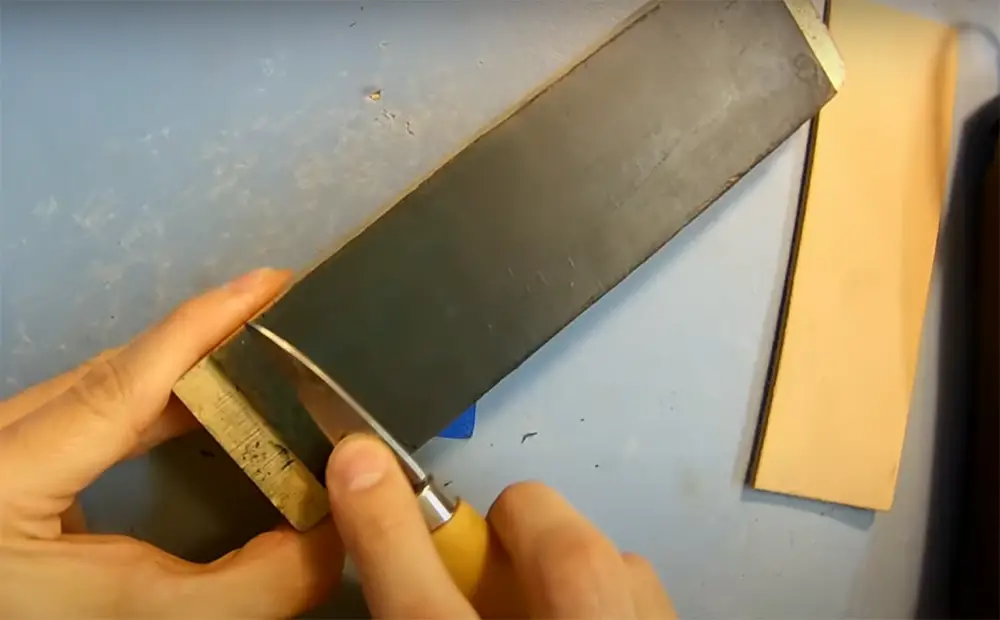
Another advantage of flat strops is that they’re easy to store and don’t take up much space. You can also use them to strop other objects like straight razors, chisels, and carving tools. [3]
When Do You Need to Use a Smooth Side?
The smooth side of the leather is typically used for finishing an edge or for touch-ups between sharpenings.
The smooth side is going to give you a gently polished edge thanks to the very soft leather surface. For this reason, a smooth side is usually used for polishing straight blades or a razor. You can still use the grain side for sharpening razors however, it really comes down to a personal preference at the end of the day.
Smoother side is also a preferred choice if you don’t plan on using much compound, if using any at all. It will still help you achieve great results without it.
Below, we will provide you with a guide on how to polish a razor blade using the smooth side of a strop.
How to polish a straight razor
The process of polishing a blade with a strop is fairly simple. We will go over each step in detail.
Hook the strop
First, you’ll need to hook the strop over something stable. The strop should be positioned so that the smooth side is facing out and the suede side is facing in.
Apply the compound if needed
As we mentioned before, you may or may not need to use a compound if you plan on stropping on a smooth side. If you do decide to use one, simply apply it to the smooth side of the strop.
There are a few different types of compounds that can be used with a strop. The most common are diamond paste, chromium oxide, and honing compound. It is not necessary, but compound can help to achieve a better edge on your blade.
Once you’ve applied the compound to the strop, it’s time to start stropping your blade.
Lay the blade on the strop
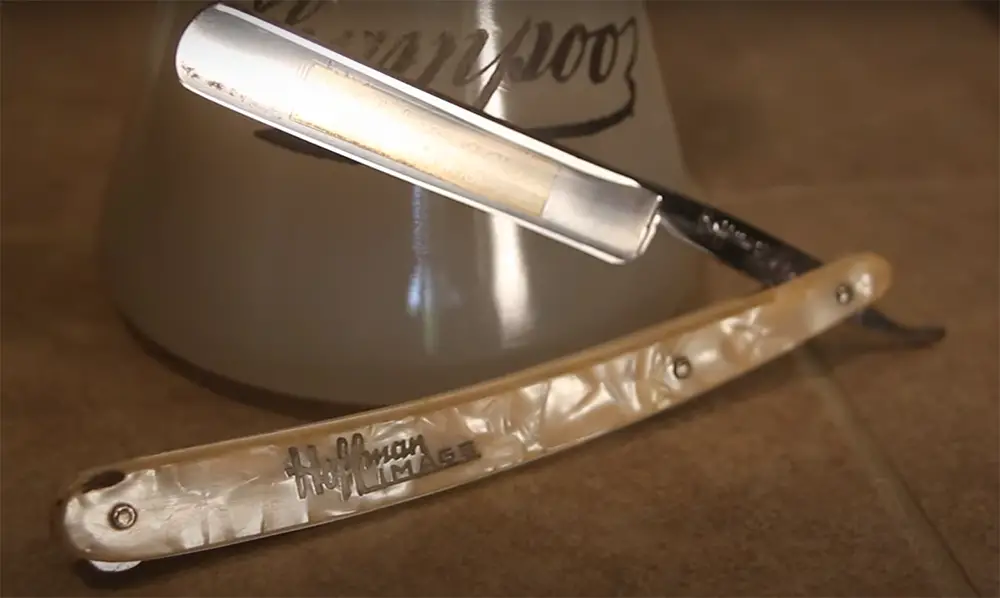
To start, you’ll want to hold the blade perpendicular to the strop with the edge facing away from you. Make sure you have a good grip on the blade before you start stropping.
Strop by moving the razor towards you
With the blade perpendicular to the strop, you’ll want to stroke the blade towards you. When stropping your razor, you’ll want to hold the blade at about a 40-degree angle and use even strokes.
Start at the heel of the blade and stroke towards the tip. Remember to keep the edge facing away from you as you stroke.
You can start with light pressure and increase it if needed. Too much pressure can damage your strop or your blade. Too little pressure will not be effective in polishing your blade.
Avoid lifting the blade off of the strop as you stroke. Lifting the blade will cause inconsistencies in your edge.
Flip the blade
Once you reach the end of the strop belt, it’s time to flip the blade over and stroke the other side. Again, you’ll want to start at the heel of the blade and stroke towards the tip.
Remember to keep a light pressure as you stroke and avoid lifting the blade off of the strop belt.
Repeat as needed
You’ll want to continue stropping the blade until you’ve achieved the desired edge. How many strokes you’ll need will depend on the starting condition of your blade and how sharp you want it to be.
As a general rule, you should stroke each side of the blade around 30-40 times. If you’re using a compound, you may need to increase the number of strokes.
Once you’ve finished stropping, it’s time to test your edge! [4], [5]
When Do You Need to Use a Suede Side?
The suede side of the leather is typically used for honing a knife’s blade or for polishing an edge that’s already been sharpened.
If your razor is dull or has been damaged, you may need to use a more abrasive surface to remove the burrs and straighten the edge. In this case, the nap of the suede creates a very fine abrasive that can remove burrs and refine an edge.
The Suede side is also a preferred side among the wood carvers. The main reason for that lies in the tools they use. Wood carving tools often get better results after being stropped specifically on the suede surface.
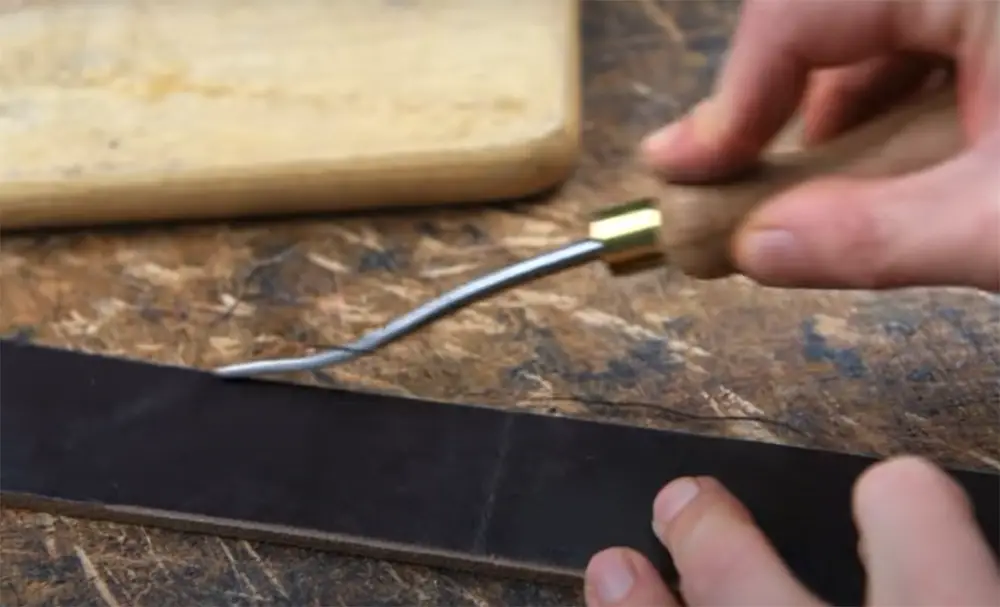
Suede is also good for applying compound because it provides a more suitable surface for compound to grip on. This allows you to evenly distribute the compound and avoid over-stropping one area. [3], [4]
Now, we will provide you with a step by step guide on how to strop a knife.
Secure the trop firmly
The first step is to find a comfortable and safe position to strop your knife. You will need to have a good grip on the strop, so it doesn’t move around while you’re stropping.
If you’re using a hanging strop, you can also secure it to a solid object like a table or door handle. This will give you more control over the pressure and angle you’re applying to the blade.
Apply the compound
The next step is to apply the compound to the strop. We advise on using a small amount of compound, so you don’t overdo it and damage your knife.
You can either apply the compound directly to the strop or your knife blade. If you’re applying it to the strop, make sure you evenly distribute it across the surface.
Once you’ve applied the compound, you’re ready to start stropping your knife.
Lay the knife on top of the strop
Start by placing the heel of the blade flat against the strop. Make sure the sharp edge is facing away from you and the blade is at a low angle.
Start stropping towards yourself
Slowly and carefully, start stropping the blade towards yourself. Apply moderate pressure as you stroke the blade along the strop.
Repeat the same for another side
Once you’ve finished stropping one side of the blade, turn it over and repeat the process on the other side following the same guideline. Keep stropping until you’re satisfied with the sharpness of your knife. [4], [6]
How to Take Care of Your Leather Strop
Leather strops are a great investment, and with proper care, they can last for years. Here are a few tips to help you take care of your strop:
- Hang your strop when you’re not using it to prevent it from losing its shape;
- Avoid exposing your strop to direct sunlight or excessive heat;
- If your strop starts to feel dry or stiff, you can condition it with a small amount of leather conditioner;
- Strop before using a knife or a razor to prevent them from dulling; [7]
Comparison of Stropping Leather Sides for Sharpening
When it comes to stropping, choosing the right side of the leather can make a significant difference in achieving a polished edge on your blade or tool. This table provides a comparison of various indicators for the two commonly used sides of leather for stropping: the flesh side (rough side) and the grain side (smooth side). The data presented here aims to help you make an informed decision based on the specific requirements of your sharpening needs.
| Indicator | Flesh Side (Rough Side) | Grain Side (Smooth Side) |
|---|---|---|
| Abrasive Strength | High | Low |
| Texture | Rough | Smooth |
| Stropping Technique | Aggressive stropping | Gentle stropping |
| Edge Polishing | Efficient for initial edge work | Final touch and refinement |
| Leather Type | Split Leather | Full Grain Leather |
| Availability | Widely available | Less common |
This table compares the flesh side (rough side) and the grain side (smooth side) of leather for stropping based on several indicators.
- Abrasive Strength: The flesh side of leather offers higher abrasive strength compared to the grain side. It allows for more aggressive stropping to remove significant imperfections and reshape the edge.
- Texture: The flesh side has a rough texture, while the grain side has a smoother texture.
- Stropping Technique: The rough side requires a more vigorous and aggressive stropping technique, while the smooth side necessitates a gentler approach to avoid damaging the leather or the edge.
- Edge Polishing: The rough side is efficient for initial edge work, whereas the smooth side is ideal for providing a final touch and refinement to the edge, resulting in a polished finish.
- Leather Type: The rough side is typically made from split leather, which is obtained from the bottom layers of the hide. In contrast, the smooth side is often made from full-grain leather, which is the topmost layer of the hide.
- Availability: The rough side, being more commonly used, is widely available in the market. On the other hand, the smooth side is relatively less common to find.
Consider these factors when selecting the appropriate side of leather for your stropping needs, keeping in mind the desired outcome and the specific tools or blades you intend to sharpen.
FAQ
Is stropping the same as sharpening?
No, stropping is not the same as sharpening. Sharpening is the process of removing metal from the blade to create a new, keen edge. Stropping is the process of polishing the blade to maintain or improve its current edge.
Stropping can be done with a variety of materials, but leather is one of the most popular because it’s relatively inexpensive and easy to find. Leather also offers a good amount of friction, which is necessary for stropping.
Do I use smooth or rough sides of leather for strop?
The short answer is: it depends on the knife. If you are stropping a straight knife, use the smooth side of leather. If you are stropping a knife with burrs use the rough side of leather. But overall, it will depend on your personal preferences as both strop sides can give you a good edge.
What is the suede side of a leather strop?
The suede side of a leather strop is the flesh side of the hide. It’s the part that was touching the animal’s skin, and it’s usually softer and more supple than the other side of the hide.
What are the benefits of using the smooth side of leather for a strop?
Using the smooth side of leather for a strop offers several advantages. Firstly, the smooth side allows for a more refined polishing and honing action on the blade. The smooth surface helps to create a mirror-like finish and enhances the sharpness of the edge. Additionally, the smooth side of leather is generally firmer, providing better support for the blade during stropping. This helps maintain the desired angle and ensures consistent results.
Why would I choose the rough side of leather for a strop?
Although the rough side of leather may not provide the same level of polishing and refinement as the smooth side, it has its own benefits. The rough side is typically coarser, which makes it effective for initial sharpening or removing minor nicks and imperfections from the blade. The rough side can also help in establishing a toothier edge, which can be advantageous for certain cutting tasks that require increased grip or durability.
Can I use both sides of the leather strop?
Absolutely! Many users find that utilizing both sides of the leather strop provides the best results. You can start with the rough side to address any initial sharpening needs, removing minor burrs or damage. Once the blade is in good shape, you can switch to the smooth side for the final honing and polishing stages. This combination of both sides allows you to achieve a balance between sharpness and refinement.
What techniques should I use when stropping with the smooth side of leather?
When stropping with the smooth side of leather, it’s crucial to maintain consistent pressure and angle throughout the process. Start by applying a thin layer of stropping compound evenly across the leather surface. Hold the blade at the desired angle and apply light pressure while moving the blade in a controlled, sweeping motion. Avoid excessive pressure or uneven strokes, as they can lead to inconsistent results. Repeat the stropping motion multiple times on each side of the blade to achieve optimal sharpness.
How can I maximize the effectiveness of stropping with the rough side of leather?
To make the most of stropping with the rough side of leather, it’s recommended to use it for initial sharpening or blade maintenance. Start by ensuring the leather surface is clean and free from any debris or residue. Place the blade at the desired angle and apply light to moderate pressure while stropping in controlled, straight motions. It’s important to monitor the blade’s progress carefully, making sure not to overdo the sharpening and maintain a consistent angle. Once the desired sharpness is achieved, transition to the smooth side of the strop for further refinement if desired.
Are there any specific types of leather recommended for use with a strop?
When selecting leather for a strop, it is important to choose the right type of leather that is suitable for sharpening and honing. Vegetable-tanned leather is a popular choice as it is firm, durable, and has a consistent grain structure. Top-grain leather, which is the outermost layer of the hide, is also commonly used due to its smooth and even surface. Avoid using suede or split leather for stropping, as they have a softer texture and may not provide optimal results.
Do I need to apply any compounds or pastes to the leather strop?
Applying a stropping compound or paste to the leather strop can significantly enhance its effectiveness. Stropping compounds are abrasive substances that help remove micro-burrs and refine the blade’s edge during stropping. They come in various grits, ranging from coarse to fine, depending on the level of refinement desired. The compound should be applied sparingly to the leather surface, ensuring it is evenly distributed. Be sure to follow the manufacturer’s instructions regarding the specific compound you are using.
How often should I strop my blade?
The frequency of stropping depends on various factors such as blade usage, cutting materials, and personal preference. As a general guideline, stropping can be done before or after each use to maintain the sharpness of the blade. However, if you notice a decrease in cutting performance or the blade starts to dull, it’s a good indicator that it’s time for stropping. Regular stropping helps to realign the microscopic edge of the blade and extend the time between more intensive sharpening sessions.
Can a leather strop be used for all types of blades?
Yes, a leather strop can be used for a wide range of blades, including knives, razors, chisels, and other cutting tools. However, it is important to consider the size and shape of the blade in relation to the strop. For longer blades, you may need a longer strop to ensure proper coverage and consistent stropping motion. Additionally, it’s crucial to adjust the angle and pressure accordingly based on the specific blade you are stropping to achieve the desired results.
How should I clean and maintain my leather strop?
To maintain the effectiveness of your leather strop, it is essential to keep it clean and in good condition. After each stropping session, wipe the leather surface with a clean, dry cloth to remove any metal particles or debris. If the strop becomes excessively dirty or clogged with compound residue, you can gently clean it using a soft brush or damp cloth. Avoid using harsh chemicals or excessive moisture, as it can damage the leather. Periodically, you may need to reapply a thin layer of stropping compound to restore its effectiveness. Proper storage in a cool and dry place is also recommended to prevent mold or deterioration of the leather.
Useful Video: How To Make A Leather Strop – For Honing Your Cutting Edge
Conclusion
So, which side of the leather to strop on? It really depends on your preference. If you have a blade that is already quite smooth, use the smooth side of the leather. This will help keep your blade in good condition and free from any nicks or scratches. If you are using a compound when stropping, or if your blades have some burrs on them, then the suede side would be better as it will help remove these imperfections. Whichever side you choose, make sure to keep your strokes even and consistent for optimal results.
References:
- https://www.knivesandtools.com/en/ct/what-is-knife-stropping.htm
- https://jeffpeachey.com/2012/09/18/how-to-strop-a-knife/
- https://www.sharpeningsupplies.com/Understanding-Strops-W111.aspx
- https://blog.chefsvisionknives.com/which-side-of-leather-should-you-use-for-strop/
- https://www.beardandblade.com.au/blogs/academy/how-to-strop-a-straight-razor-in-5-easy-steps
- https://jeffpeachey.com/2012/09/18/how-to-strop-a-knife/
- https://groomingartist.com/2016/08/16/how-to-care-for-a-leather-strop/

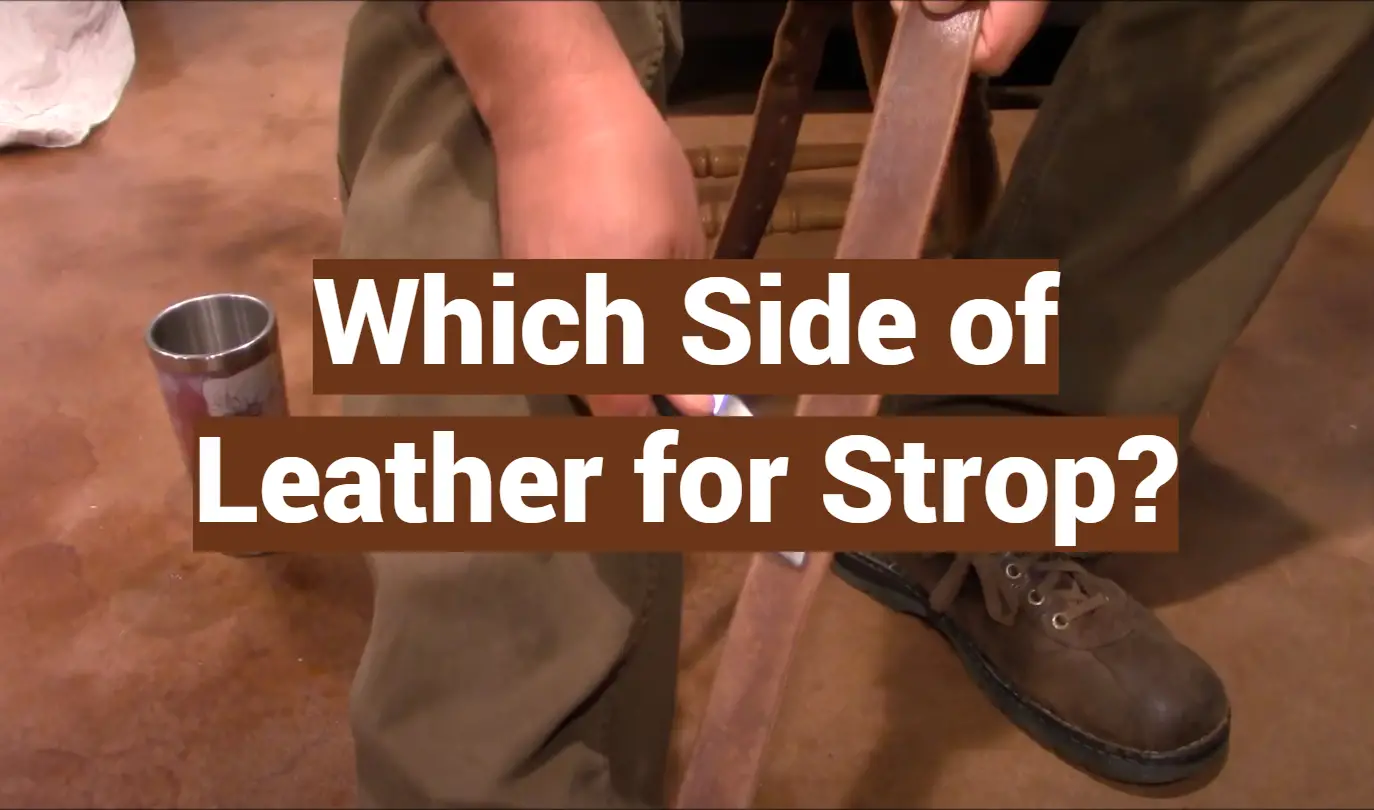



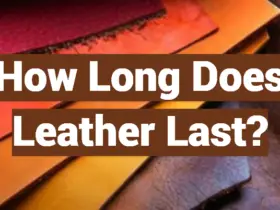

Leave a Reply